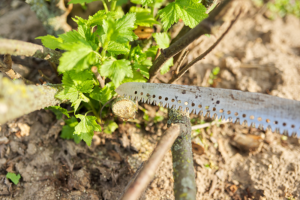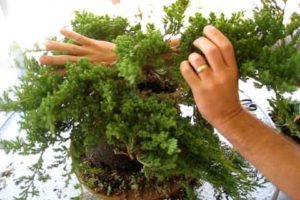The hornbeam bonsai, also known as Carpinus betulus, is a hardy tree species that is well-suited to bonsai cultivation. With proper care, a hornbeam bonsai can thrive and become a beautiful and elegant addition to any garden or home.
One of the first things to consider when growing a hornbeam bonsai is the location. Hornbeam bonsai trees prefer partial shade to full sun and will do best in an area that receives dappled sunlight throughout the day. They are also tolerant of a wide range of temperatures, making them suitable for most climates.
Next, you’ll need to choose a suitable pot for your hornbeam bonsai. Bonsai pots come in a variety of sizes, shapes, and materials, and the right pot will depend on the size and style of your tree. Make sure the pot has drainage holes to prevent the roots from sitting in standing water.
Once you have your pot, it’s time to plant your hornbeam bonsai. Begin by adding a layer of bonsai soil mix to the bottom of the pot and then gently place the tree in the pot, making sure the trunk is centered. Add more soil mix around the roots, tamping it down gently to remove any air pockets. Water the tree thoroughly after planting to help the soil settle around the roots.
After planting, it’s essential to pay close attention to the watering needs of your hornbeam bonsai. These trees should be watered deeply, but not too frequently. Overwatering can lead to root rot, while underwatering can cause the tree to become stressed. The best way to determine when to water your bonsai is to check the soil moisture level with a moisture meter or by sticking your finger about an inch into the soil. If the soil feels dry at this depth, it’s time to water the tree.
In addition to watering, hornbeam bonsai trees also need proper fertilization to thrive. Use a balanced bonsai fertilizer and follow the recommended application rate on the label. It’s also a good idea to fertilize your tree after repotting, as this will help it recover from the stress of being transplanted.
As your hornbeam bonsai grows, it will need to be pruned and trained to maintain the desired shape. Hornbeam bonsai trees are generally shaped using a combination of pruning and wiring techniques. Pruning involves removing unwanted or excess branches and foliage to shape the tree, while wiring involves wrapping wire around the branches to bend and shape them into the desired position.
It’s also important to repot your hornbeam bonsai tree on a regular basis. This will allow the tree to continue growing and maintain the desired shape. Repotting should be done every few years, in the early spring before the tree starts to grow new leaves. When repotting, make sure to use a well-draining bonsai soil mix and trim back any damaged or excess roots.
With proper care, a hornbeam bonsai can thrive and become a beautiful and elegant addition to any garden or home. By providing the right growing conditions, watering and fertilizing regularly, and pruning and training the tree to maintain the desired shape, you can help your hornbeam bonsai thrive for years to come.
xxxx







Leave a Reply
Your email is safe with us.
You must be logged in to post a comment.